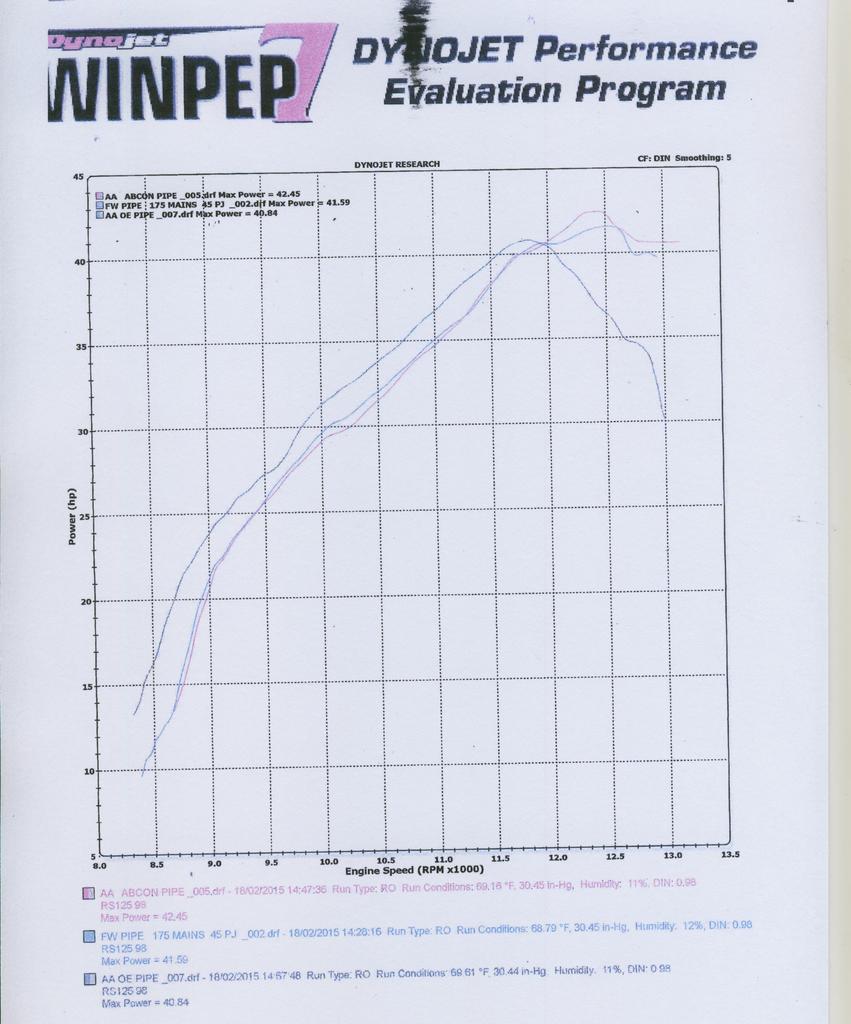
This power graph is of three pipes tested during one session on the dyno, and there were no engine adjustments made and the spec was just as it finished its last race. We were very aware that the engine was running rich but was left as is. There are three graphs in all, the last one which I don`t have, shows the power after some adjustments to jetting then to ign settings to the “Abcon” made pipe!
The poorest performing pipe is the original Honda item, as can be seen it gives good power up to around 11,750rpm and 40.84 hp then falters badly.
The second best performer is the pipe that was in regular use and gave 41.59 hp at around 12,600rpm and is a Frank Wrathall made pipe. This is pretty good as it maintains its power reasonably from 12,000 to 12,700rpm.
The best performer is the one we provided the drawing for and Andy Bacon made for us. With over 40hp from 11,900 to 13,100 and a peak of 42.5hp it performs strongly.
The last session opened up a gap where the blue and red lines merge at 12,600 and pushed peak up by just .3 hp. This was achieved by taking some of the richness from the top end of the jetting range and a small adjustment to the ignition timing.
I posted this graph to show how important the correct pipe can be, and it`s not often that three pipes are shown on one print out.
The diffuser on the home conceived pipe is 34% of the T/L!
We now have direct correlation between all of the physical pipe dimensions of the three pipes and their respective power delivery characteristics. Set against this are the engine data and specifications. The way ahead now is a lot clearer, and for a very standard spec engine, although meticulously prepared by Steve, it is pretty damn good!
Trevor
